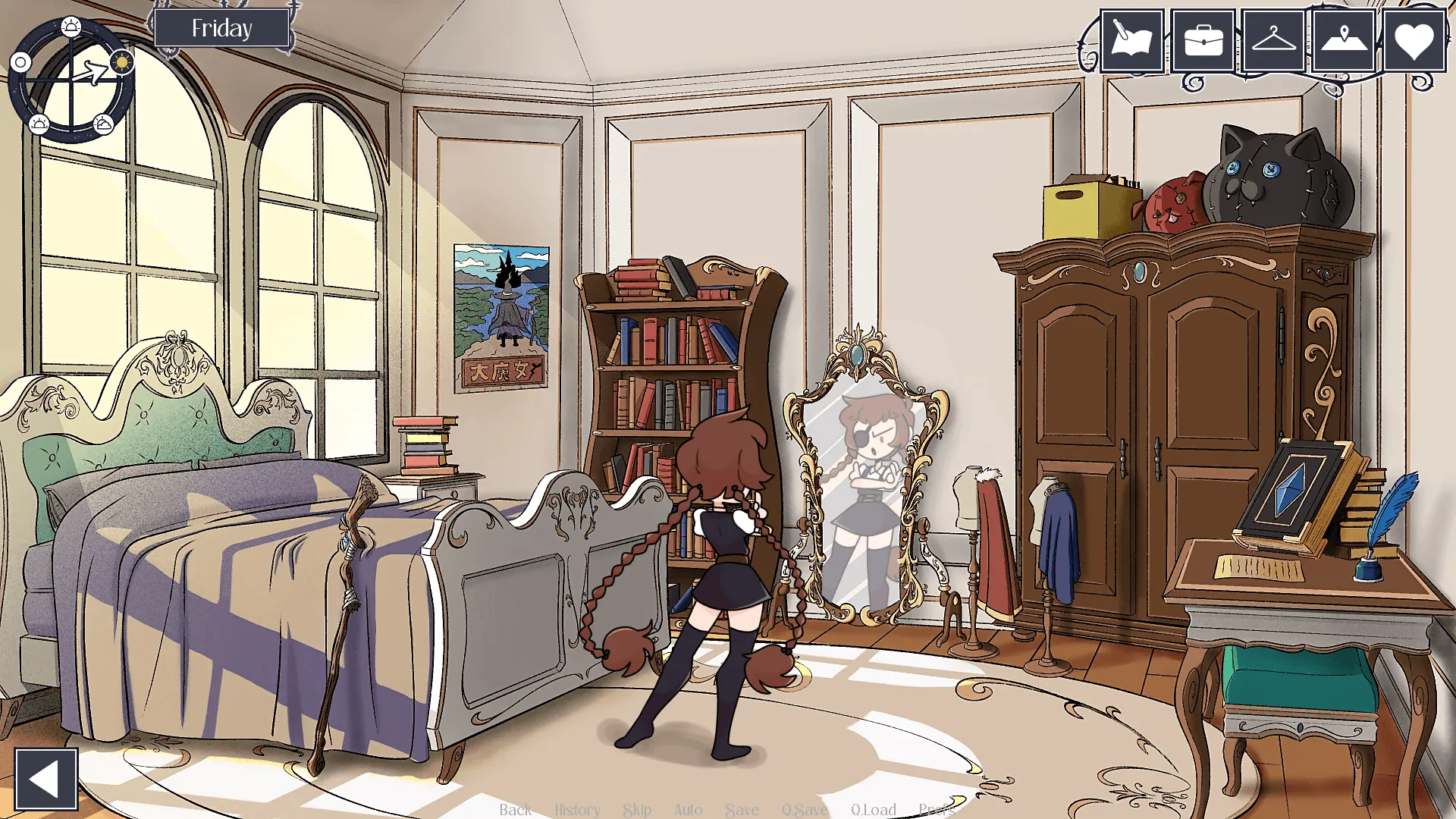
Pale Carnations
Play Pale Carnations
Pale Carnations review
Unpacking the Narrative Depth of a Mature-Themed Game
Pale Carnations redefines interactive storytelling through its complex character dynamics and choice-driven narrative. This visual novel blends psychological depth with strategic decision-making, offering players a unique exploration of relationships and consequences. As someone who’s analyzed dozens of narrative-driven games, I’ve found its approach to moral ambiguity particularly compelling. Let’s examine what makes this experience stand out in its genre while maintaining focus on its artistic merits.
Core Mechanics and Narrative Design
Choice Architecture: Shaping Your Experience 🎮✨
Let’s cut to the chase: Pale Carnations isn’t here to hold your hand. Every dialogue choice feels like picking a lock—one wrong move, and you might miss the treasure chest of secrets waiting behind that character’s smirk. The game’s visual novel decision system isn’t just about “good vs. evil” or “romance vs. rivalry.” It’s a web of nuanced interactions where even a casual coffee invitation could ripple into a full-blown power struggle.
Take my first playthrough, for example. I thought flirting with the enigmatic club owner Rosalind during an early scene was harmless fun. Big mistake. By mid-game, her icy resentment locked me out of entire story arcs. That’s the magic of narrative branching paths here—your choices stick, weaving a story that’s uniquely yours. Developer Honey Lemon Studios calls this “emotional gravity”: decisions carry weight because they’re tied to characters’ core desires, not just surface-level reactions.
| Game Title | Branching Paths | Player Impact Depth |
|---|---|---|
| Pale Carnations | 45+ unique endings | Relationships alter core plot events |
| City of Broken Dreamers | 20+ endings | Mostly cosmetic dialogue shifts |
| Being a DIK | 30+ endings | Mini-game dependent outcomes |
🔥 Pro tip: Save often, but don’t reload to “fix” choices. The most gripping stories emerge from unintended consequences.
Character Development Systems: More Than Just Heart Meters 💔🔍
Forget filling love meters—Pale Carnations gameplay mechanics treat relationships like live wires. Each character has hidden thresholds tied to their backstory. Take Viola, the ambitious bartender with a penchant for sabotage. Compliment her mixology skills? +2 Trust. Mention her rival’s success? Watch her smile tighten as your Influence stat plummets.
The game’s character relationship dynamics shine in how they intersect. In one playthrough, gaining Clara’s loyalty (the sharp-tongued journalist) meant losing access to the underground gambling ring she’s investigating. You’re not just balancing stats; you’re playing 4D chess with emotions. As lead writer Marta Kovacs puts it: “We wanted players to feel the burn of compromise. You can’t please everyone—and that’s where the real drama lives.”
“Your choices don’t just change endings—they redefine who these characters become.”
Here’s how to navigate this minefield:
– Track subtext, not just text: A character’s posture or vocal tone often hints at their true reaction.
– Invest in “anchor” relationships: Pick 1-2 characters to deeply align with early on—they’ll buffer against late-game chaos.
– Embrace failure: Some of the game’s richest scenes trigger only when you’ve burned a bridge beyond repair.
Balancing Strategy and Story Flow 🧩🚦
Okay, let’s address the elephant in the room: how do you enjoy the story when you’re sweating over game progression strategies? Pale Carnations walks this tightrope by tying resource management to emotional stakes. The “Influence” currency isn’t just for unlocking sexy scenes—it’s your bargaining chip in power plays.
Want to blackmail a corrupt politician? You’ll need Influence earned by helping the street artist collective. But spend too much there, and you’re broke when the mafia comes knocking. It’s like planning a heist where every ally has their own agenda.
The genius lies in how narrative branching paths and gameplay systems feed each other. A tactical choice (e.g., investing in hacking skills) might later let you bypass a confrontation entirely, revealing story beats that brute-forcers never see. But beware: optimizing too hard can turn the game into a spreadsheet simulator.
🎯 My golden rule: Play blind first. Let the story gut-punch you. Save the min-maxing for replay #2.
Wrapping It Up: Why This Game Sticks With You 🌌💡
Pale Carnations doesn’t just want your attention—it demands your introspection. Its visual novel decision system forces you to confront uncomfortable truths about power and desire, while the character relationship dynamics make every connection feel earned or deserved. Sure, you could follow a guide to get the “perfect” ending. But where’s the fun in that? The real magic happens when you lean into the chaos, let the narrative branching paths surprise you, and accept that sometimes, carnations wilt—and that’s okay.
Now go wreck some lives (responsibly). Your story’s waiting. 🔥
Pale Carnations demonstrates how mature themes can be handled with narrative sophistication, offering players meaningful choices that impact character relationships and story outcomes. Its layered approach to decision-making sets a new standard for emotional engagement in interactive fiction. For those interested in story-driven experiences that challenge conventional storytelling, this title deserves thoughtful exploration. Join community discussions to share your interpretations of its multifaceted narrative.





















